Hamstring stretches can have a profound and positive effect on your overall mobility. A hamstring is a group of muscles located on either side of your body. They are attached to your ischial tuberosity, the bone you usually rest on when sitting, run down either femur and finally attach to the other side of your knee joint. This muscle group can cause pain or discomfort in many areas that may surprise you. Your legs and hips may be the obvious ones, but also your buttocks, hips, pelvic floor, back, and spine can also be affected.
Benefits of Hamstring Stretches
- Decrease pain in pelvic, back, and thigh regions
- Help with conditions associated with pelvic floor dysfunction
- Increase pelvic, spine, and hip mobility
- Increased mobility allows for improved body mechanics when bending, lifting, or twisting
- Gain flexibility in your pelvis, back, spine, hips, and thighs
- Increased flexibility allows for improved strength gains through all lower extremities
Hamstring stretches can be done in a number of ways, and any of the variations provided in my
YouTube video , or this article, are a perfect chance for gaining increased flexibility and range of motion. All of the demonstrated variations can be done on either side of your body.
If you’re just a beginner or seeking a gentle way to ease into hamstring stretches, any of these are a great choice to begin your journey. Hamstring stretches can be done by themselves, or within a sequence of stretches , so start reaping those benefits today, and give it a shot! Begin by relaxing deeply, focusing on your diaphragmatic breathing, and find what you need to be supported properly in the guide below.
How to Do Hamstring Stretches
Practice your diaphragmatic breathing with this stretch 3x daily. Hold for 90 seconds at a time. This hold time is important for your body to transition and downregulate. It may feel uncomfortable at first. Meet your body where it’s at and breathe through it.
Variation 1: Supine Hamstring Stretches
For this variation of hamstring stretches, you will need some additional supplies. In the example, I utilize a yoga strap, you can too, but you are also welcome to use a belt, some people even like to utilize a resistance band or theraband, whatever gets the best stretch for you. If your band is not already a loop, you will need to create a loop with your strap or band by putting the end through the ring on the other side, like in the image above.
Step 1:
Lay on your back, raise your knees, and place your feet soles down on the floor or mat about 12-18 inches below your buttocks. Bring one knee up towards your chest, and utilize the strap to loop around your foot on the same leg.
Step 2:
Extend the foot in the strap up toward the sky, as in the example above, and slowly tighten the strap as you extend to help you gain a comfortable yet firm hold throughout the stretch.
Step 3:
Once you have the strap tightened, extend your other leg out straight along the floor or mat, and begin to stretch. It’s always best to start low and work your way up. The above image demonstrates a perfect starting position on the left. To work your way up, gradually walk your hands up your strap until you reach the perfect position. The right image is my maximum reach today. Some days might be better or worse for your range of motion and flexibility, this is a great variation of hamstring stretches that allows you to adjust regularly until you feel that nice, deep stretch through your hamstring muscles.
Variation 2: Seated Hamstring Stretches
Begin by scooting forward to the edge of your chair, enough so that your leg can extend fully straight, all the way through your knee joint, without issue. Place the ball of one foot on the floor, extending that leg straight. Place your other foot, sole flat on the floor, with your ankle directly below your knee. Sit tall, with your chest reaching forward. Once there you can begin to lean forward to deepen that stretch, like in the image below. Use your hands, resting on your alternate knee, to support you as you lean into the position.
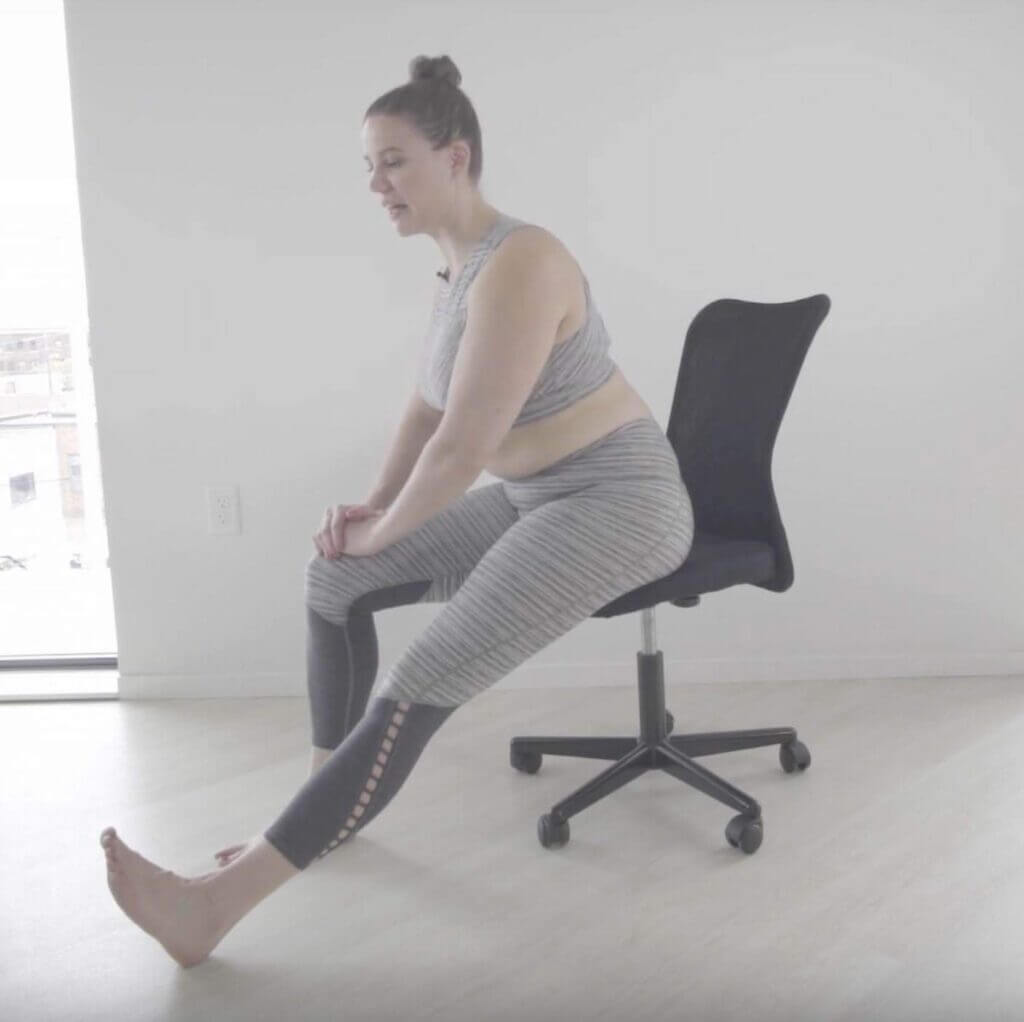
How to check in with yourself while doing the Hamstring Stretches:
As you work through these hamstring stretches, check in and ask yourself: Is it a stretch, or is it a pain? A stretch-like pulling sensation is normal, it may feel uncomfortable but investigate that feeling. A stretching sensation should gradually reduce with time and allow you to continue to deepen throughout the position. Pain, alternately, does not change, or may even increase in intensity. If you feel pain, gently ease out of that stretch and try again utilizing a different variation. There are lots of ones to choose from!
More content you may like:
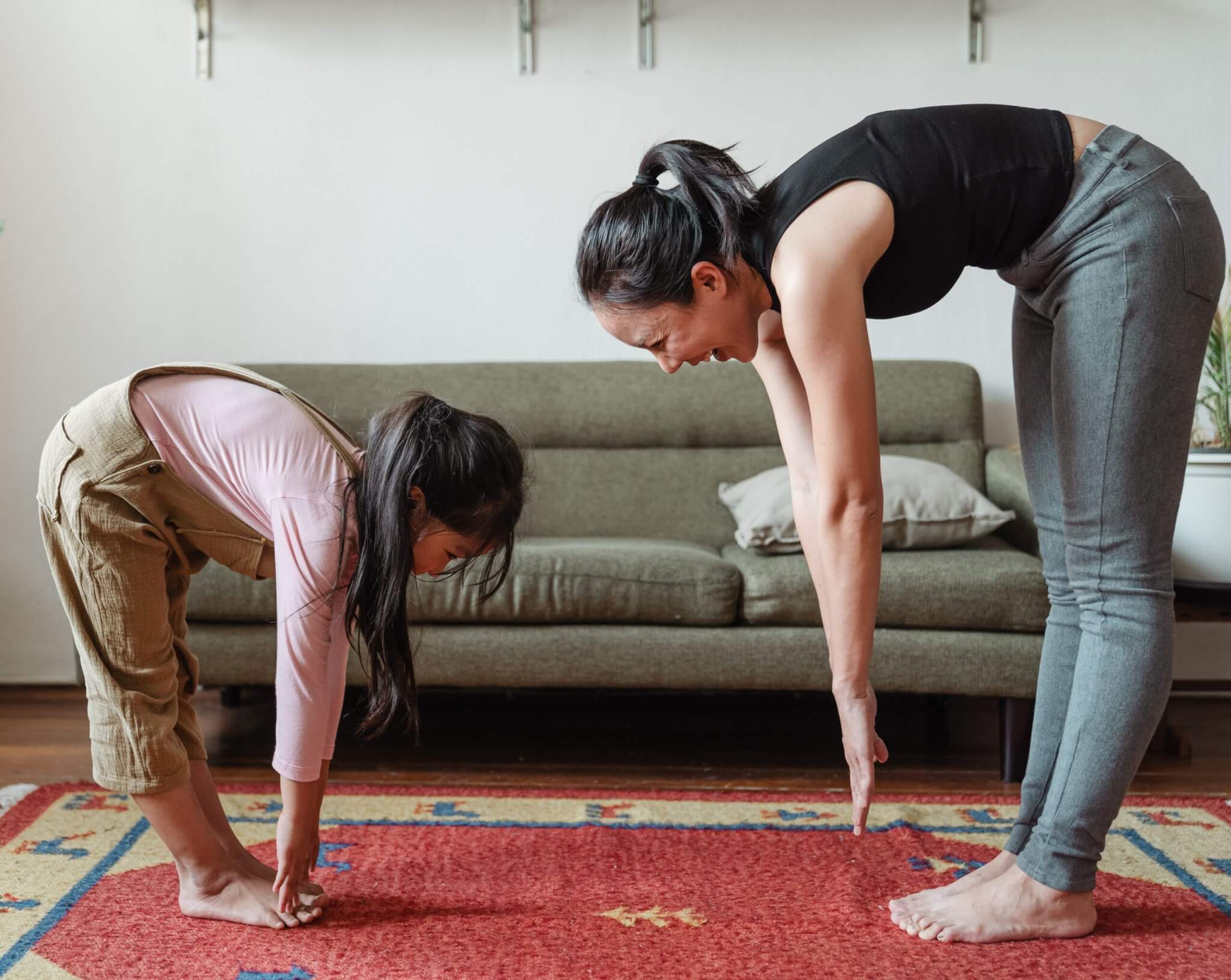


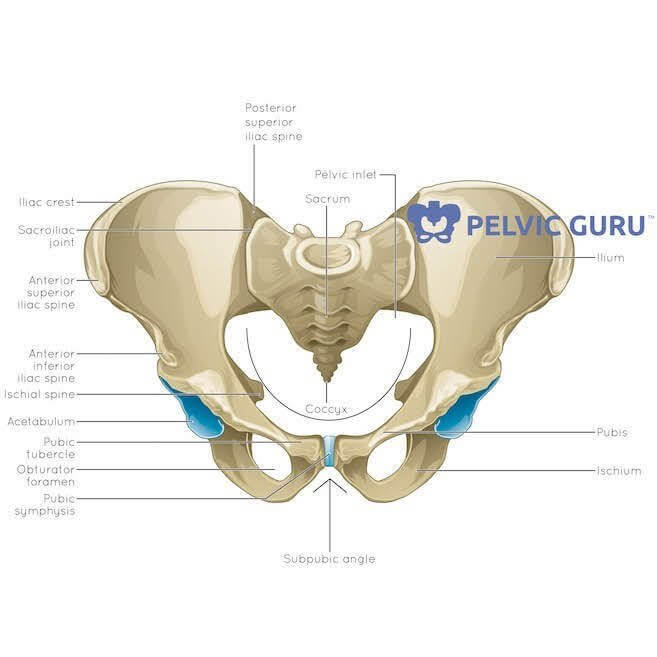

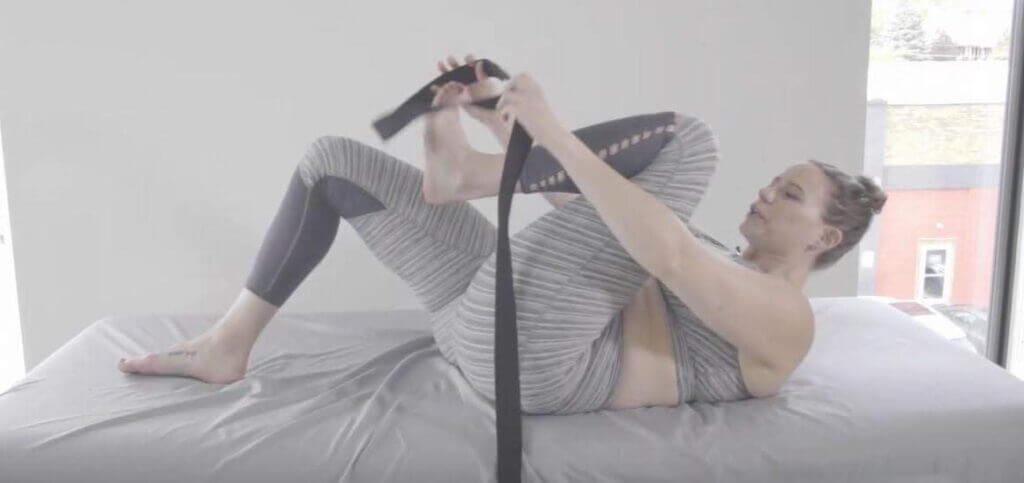
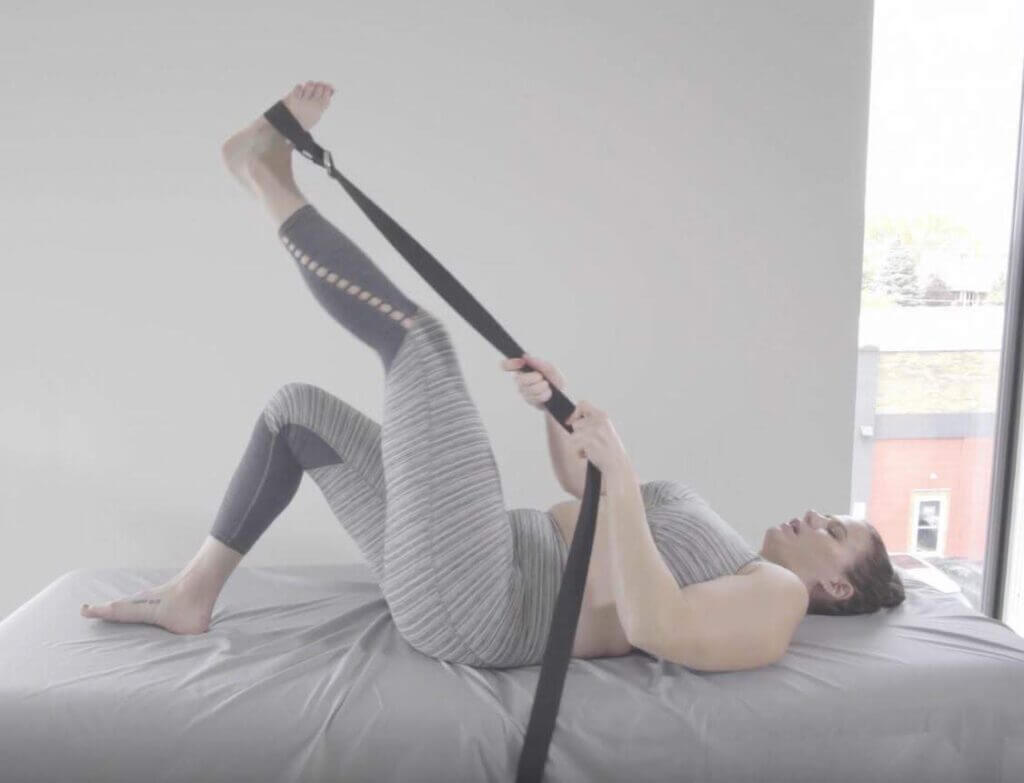

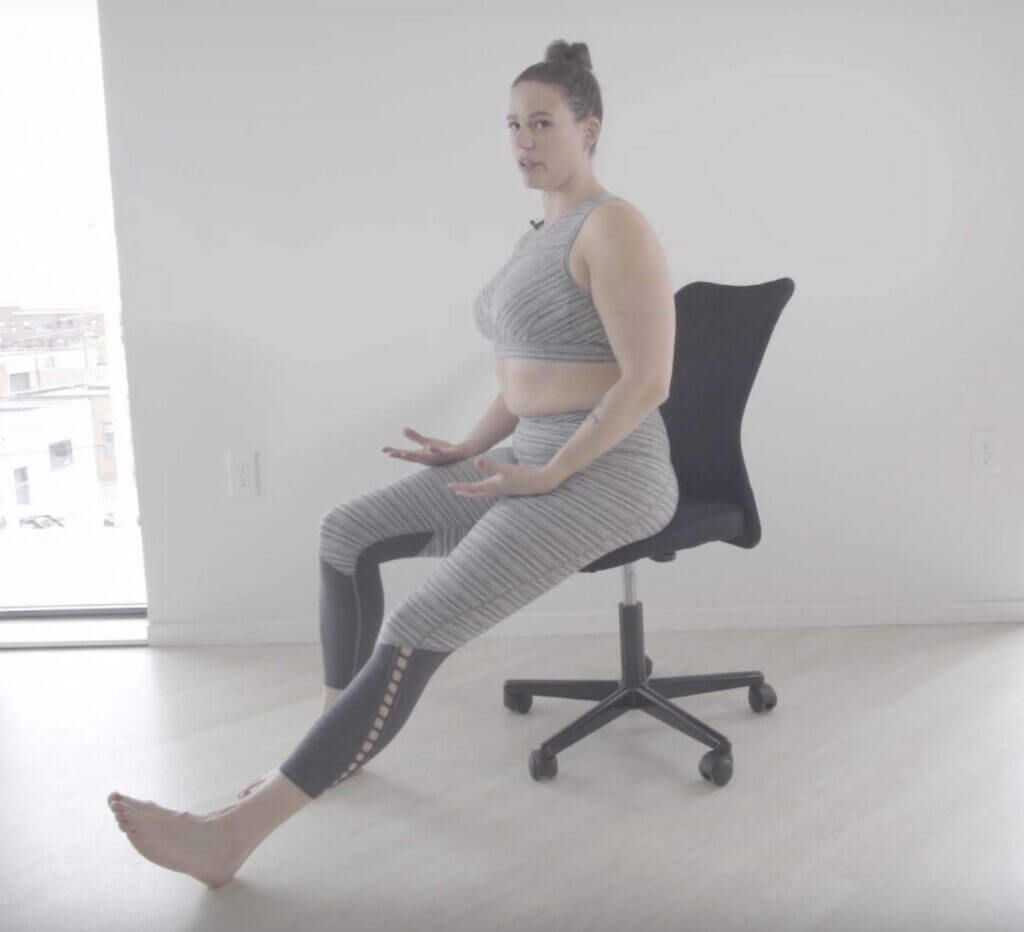






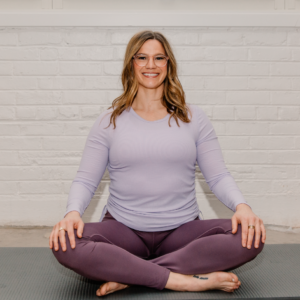
Sorry, the comment form is closed at this time.